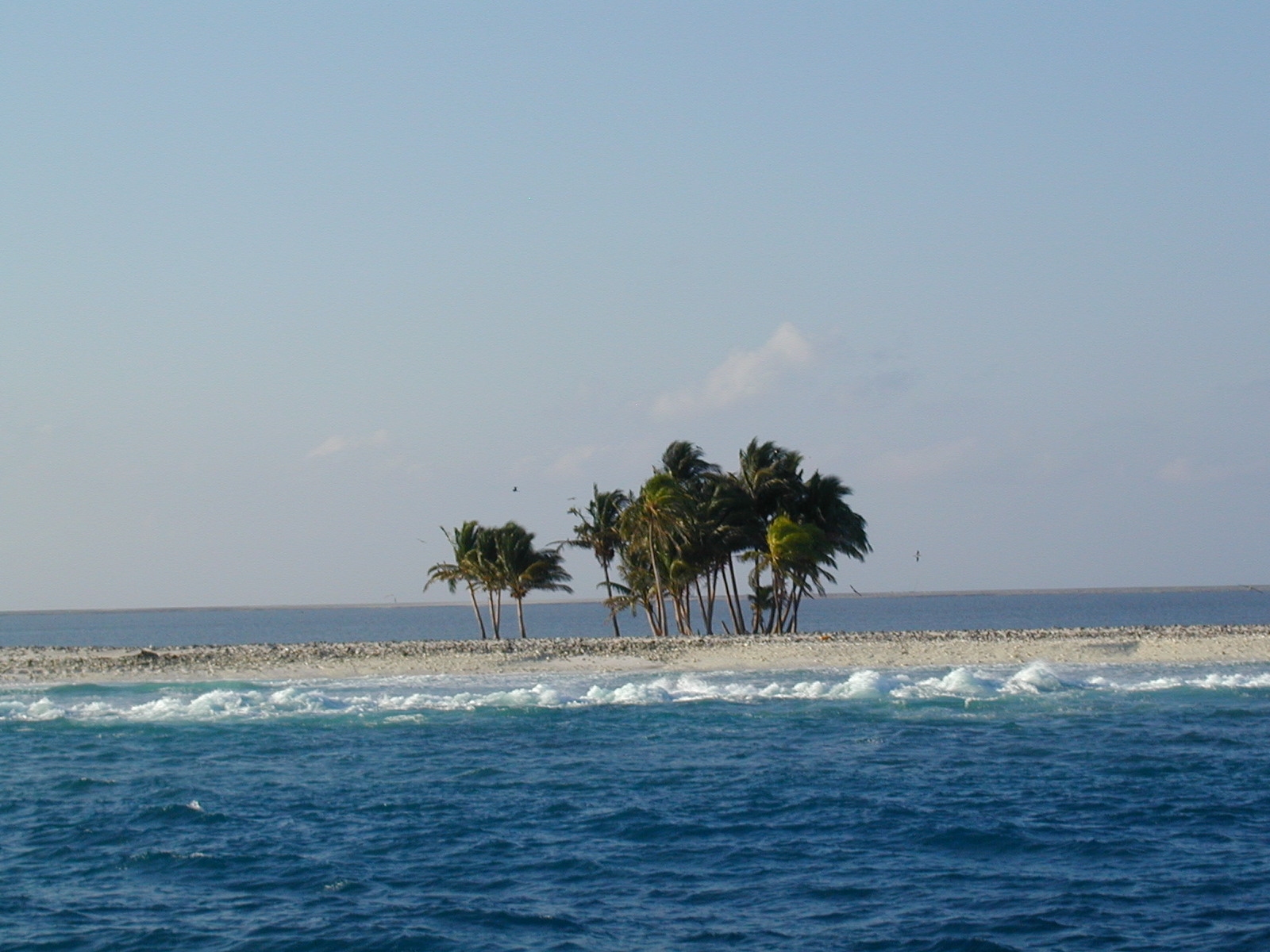While there are tourist sites, museums, art galleries, and more to see on Oahu, my favorite things to do on the island involve slowing down, taking advantage of the weather, and generally chilling out.
Read More3 Islands You NEVER Want To Visit
White sand, palm trees, gentle breezes and sparkling blue water — who wouldn't want to spend time on a tropical island?! After the long, cold winter I just lived through, I would take a hot island escape in a second.
It turns out however, that not every island in this world is a so-called "paradise" destination. Here are three islands that I guarantee you won't want to go anywhere near.
A small patch of trees is the only vegetation on Clipperton Island (source)
1. Clipperton Island
This tiny, ring-shaped atoll sits about 1,000 km off the southwest coast of Mexico. It is covered is hard, pointy coral and is battered on all sides by the Pacific Ocean and steady winds. A few palm trees are its only vegetation, there is no fresh water, the island reeks of ammonia, the lagoon around it is devoid of fish (but FULL OF SHARKS) and contains some deep basins including "the bottomless hole" that has acidic water at its base.
If this isn't enough to convince you to stay away, the terrible history of the island will.
Having changed hands frequently (it has belonged to the French, US and Mexico), in the early 1900s, Mexico established a colony there, delivering supplies by boat regularly. That is until the Mexican Revolution broke out and the deliveries stopped. Slowly, the inhabitants started dying until all that remained was one man and a handful of women and children. The man decided he was "king" of the island and started raping and murdering the women until they turned on him and he was killed. The last four survivors were rescued soon after, and no one (other then the odd castaway) has occupied the island since.
One of the few photos of the inhabitants of North Sentinel Island (source)
2. North Sentinel Island
Part of the 572 islands in the Bay of Bengal between Myanmar and Indonesia, this island was formally a part of the Republic of India. That is until it was declared "closed" in order to preserve the distinct culture of the people living there.
For thousands of years, this island has been home to a small tribe called the Sentinels who have violently resisted contact by outsiders. Completely untouched, the inhabitants kill anyone who tries to get near the island, driving off all outsiders with spears and arrows.
There are estimated to be anywhere between 50-400 of them living on the island that is roughly the size of Manhattan, but because the island is so heavily forested, their buildings are not visible, and no one can get near them, there is really no way to know. (Even Google Earth can't penetrate the tree cover to give us a better look at the individuals living here).
The last documented contact with these mysterious people was in 2006 when Sentinelese archers killed two fisherman who were within range of the island. The archers later drove off, with arrows, the helicopter that was sent to retrieve the bodies.
Snake Island from above — nobody's crazy enough to get any closer! (source)
3. Ilha de Queimada Grande (Snake Island)
If you are headed to Brazil, I suggest staying as far away as possible from this untouched paradise. Even the Brazilian Navy has forbid anyone from stepping foot on this island because it is so dangerous!
Why?
Because there are between one and five snakes per square metre living on the island.
And, I'm not talking harmless garter snakes. The palms and sandy beaches of this paradise are populated by a unique species of pit viper called the golden lancehead containing a fast-acting poison that literally melts human flesh.
Snakes win this one.
Related Posts
Travel Tales: Swimming With Stingrays In The Cayman Islands
The boat had been speeding straight out into the glittering open ocean for about 20 minutes when I heard the engine cut out and we began to slow down. As we floated to a stop, and the anchor was thrown overboard, our guide started to call out instructions while the boat slowly swayed side to side, pushed by the gentle waves created by the sandbar we were floating over.
I was spending some time on Grand Cayman Island, and was surprised to learn that I could take a tour that would let me swim with stingrays. I always thought they were too dangerous to be close to — considering that they could sting you.
But, as our guide informed us, stingrays (believe it or not) do not actually sting.
Yes, they can still hurt you if you are not careful, but it is not from any sort of "sting", but from a razor sharp barb that is located in their tail. If they feel threatened, or if you step on one (we were instructed to shuffle our feet along the sandbar and NEVER lift them to prevent just that) they will swing their tail and stab you with the barb. Not all of them produce a venom, but those that do create a poison that can be fatal to humans if not treated.
Don't worry though, they are actually quite friendly and will go out of their way to interact with snorkelers, divers, and those of us bringing them fish to eat on their sandbar.
The water was about chest deep and warm when I stepped off the boat, and it didn't take long for the grey, graceful creatures to start swimming around us. I stood as still as possible, trying not to let the waves knock me over, while their silky-smooth wings brushed up against my arms and legs.
I have never in my life felt anything so soft.
After a few minutes, one of the guides beckoned me over to him, and motioned at me to hold out my arms. Before I knew what was happening, he had grabbed one of the passing rays and placed it in my arms for the perfect photo op. (I DO NOT recommend trying this on your own — the guide was a local, who was clearly extremely comfortable around the rays).
Though I have swam near stingrays while scuba diving, being that close to so many of them is an experience that I will never forget!







